Structural Optimization and Electromagnetic Performance Research of Axial Magnetic Field Tidal Current Generators
Abstract
1. Introduction
2. Design Principles of Axial Field Tidal Energy Generators
2.1. Working Principle of Axial Field Stator Motors
2.2. Design of Direct-Drive Tidal Energy Generators
3. Design and Optimization of Axial Field Coreless Generators
3.1. Design Objectives and Structural Selection
3.2. Optimization Design of Halbach Array Permanent Magnet Structure
3.3. Stator Magnetic Field Structure Optimization Design
3.4. Generator Dimension Parameter Design
4. Finite Element Simulation Analysis and Optimization
4.1. Halbach Array Magnetic Field Simulation Verification
4.2. Generator Power and Efficiency Simulation Analysis
5. Conclusions
Author Contributions
Funding
Data Availability Statement
Acknowledgments
Conflicts of Interest
References
- Ye, W. White Paper on China’s Energy Transition China High-Tech Industry Herald, 2024-09-02 (001); Tongfang Knowledge Network (Beijing) Technology Co., Ltd.: Beijing, China, 2004. [Google Scholar] [CrossRef]
- Li, W.; Shi, H.; Liu, Z.; Han, Z.; Cao, F.; Yu, T.; Wang, Y.; Lun, Z.; Liu, H.; Sun, K. Current Status and Future Development Recommendations for China’s Marine Energy Research. Sol. Energy 2024, 7, 79–88. [Google Scholar]
- Chu, J.; Jia, F. Current Status, New Opportunities, and Challenges of China’s Marine Tidal Current Energy Generation Technology and Equipment. J. Sol. Energy 2024, 45, 668–674. [Google Scholar]
- Sun, M.; Zhao, H.; Guo, S.; Bao, J.; Gao, P.; Wang, X.; Yu, S. Design and Optimization of Axial Flux Permanent Magnet Machines. Micro Mot. 2022, 55, 1–8. [Google Scholar]
- Li, T.T.; Zhang, Y.; Liang, Y. Review of Modular Yokeless Axial Flux Permanent Magnet Machine Technology. Proc. CSEE 2021, 41, 340–353. [Google Scholar]
- Chen, Y. Design and Research of Axial Flux Permanent Magnet Machine Based on Soft Magnetic Composite (SMC) Material. Master’s Thesis, Harbin University of Science and Technology, Harbin, China, 2023. [Google Scholar]
- Chen, J.; Gu, C. Design of a Coreless Brushless Disc-Type Axial Flux Permanent Magnet Machine. Micro Mot. Servo Technol. 2002, 5, 14–16. [Google Scholar] [CrossRef]
- Li, S. Design and Analysis of Axial Flux Permanent Magnet Generator. Master’s Thesis, Henan Polytechnic University, Jiao Zuo, China, 2022. [Google Scholar]
- Zhang, L.; Li, L.; Lin, M. Influence of Rotor Structure on Performance of Axial Flux Flux-Switching Permanent Magnet Machines. Mini-Micro-Syst. Spec. Mot. 2011, 39, 38–39. [Google Scholar]
- Liu, Y. Research on Counter-Rotating Dual-Rotor Disc Permanent Magnet Synchronous Machines. Master’s Thesis, Wuhan University of Technology, Wuhan, China, 2021. [Google Scholar]
- Bageshwar, S.S.; Phand, P.V. Design and analysis of axial flux permanent magnet generator for low wind power application. Int. J. Res. Trends Innov. 2017, 2, 70–90. [Google Scholar]
- Tang, R. Modern Theory and Design of Permanent Magnet Machines; Machine Press: Beijing, China, 1997; pp. 326–330. [Google Scholar]
- Li, T.; Zhang, Y.; Liang, Y.; Ai, Q.; Dou, H.; Zhang, Z. Review on the Research Progress of Stator Yoke-Free Modular Axial Flux Permanent Magnet Motor. Proc. Chin. Soc. Electr. Eng. 2021, 41, 340–353+423. [Google Scholar] [CrossRef]
- Nishanth, F.N.U.; Van Verdeghem, J.; Severson, E.L. A Review of Axial Flux Permanent Magnet Machine Technology. IEEE Trans. Ind. Appl. 2023, 59, 3920–3933. [Google Scholar]
- Meng, Q.; Zhang, L.; Bai, L. Research on Bidirectional Impeller Direct-Drive Tidal Current Generator and Its Maximum Power Control System. Electr. Technol. 2018, 19, 1–5. [Google Scholar]
- Vun, S.T.; McCulloch, M.D.; Leong, C.Y. The development of an electromagnetic analytical design tool for megawatt-scale YASA generators. In Proceedings of the IET Conference on Renewable Power Generation (RPG 2011), Edinburgh, UK, 6–8 September 2011. [Google Scholar]
- Yang, M. Design and Simulation Analysis of Low-Speed Horizontal-Axis Tidal Current Generator. Master’s Thesis, Changchun Institute of Technology, Changchun, China, 2021. [Google Scholar]
- Zhang, M.; Tian, J.; Liu, H. Stator Winding Optimization and Efficiency Improvement Study of Tidal Current Generator. Electr. Drive 2018, 48, 76–83. [Google Scholar]
- Chen, L. Electromagnetic Design and Simulation Analysis of Tidal Current Permanent Magnet Generator. Large Electr. Mach. Technol. 2020, 2, 7–11. [Google Scholar]
- Liu, W.; Yang, J.; Wang, P.; Pei, L.; Yang, Y.; Zhang, X.; Zhang, B. Design of an axial field direct-drive tidal stream generator. J. Phys. Conf. Ser. 2004, 2896, 012019. [Google Scholar] [CrossRef]
- Yaser, C.; Dan, I. Ultra-fast finite element analysis of coreless axial flux permanent magnet synchronous machines. IET Electr. Power Appl. 2024, 18, 883–896. [Google Scholar]

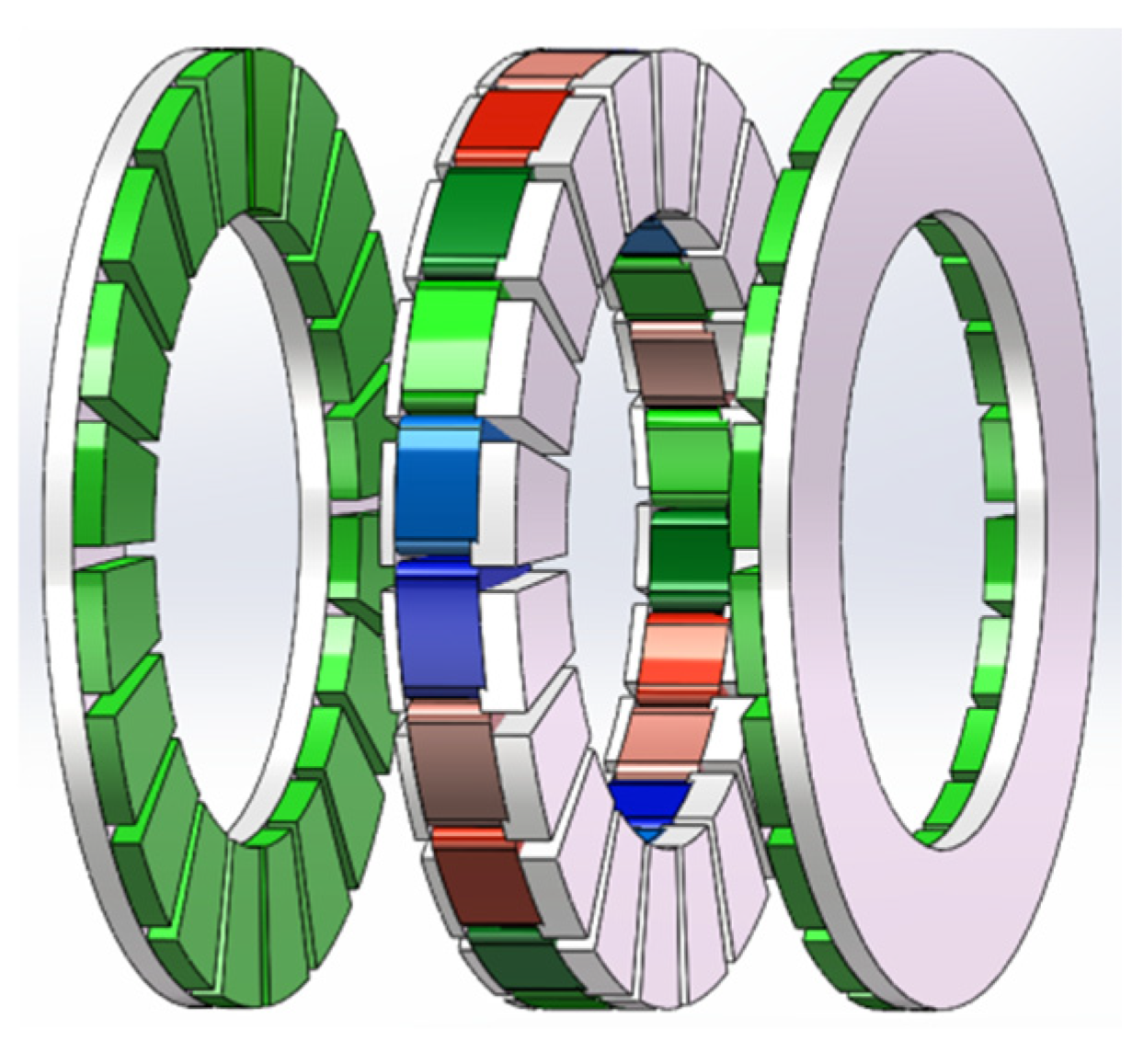


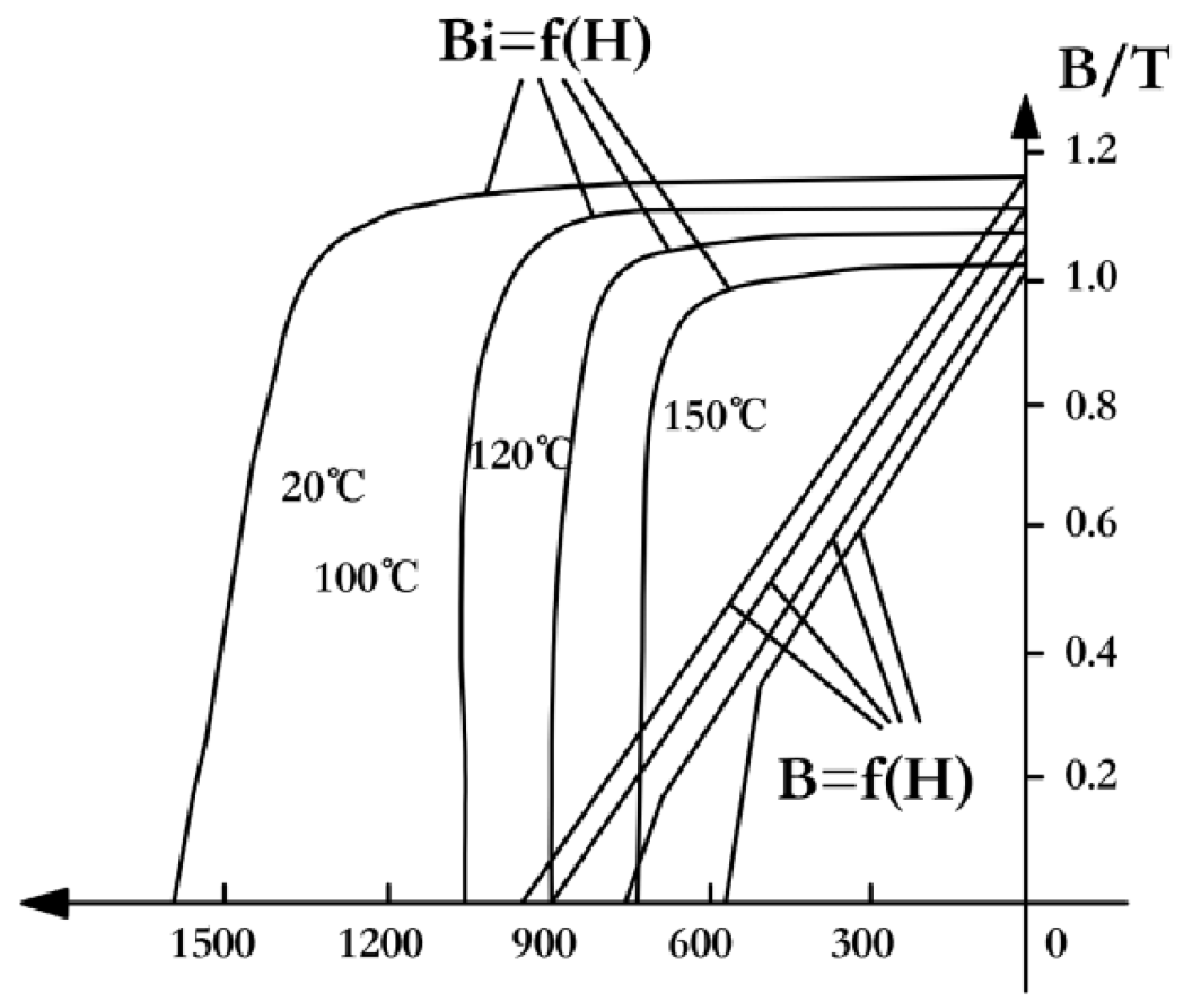

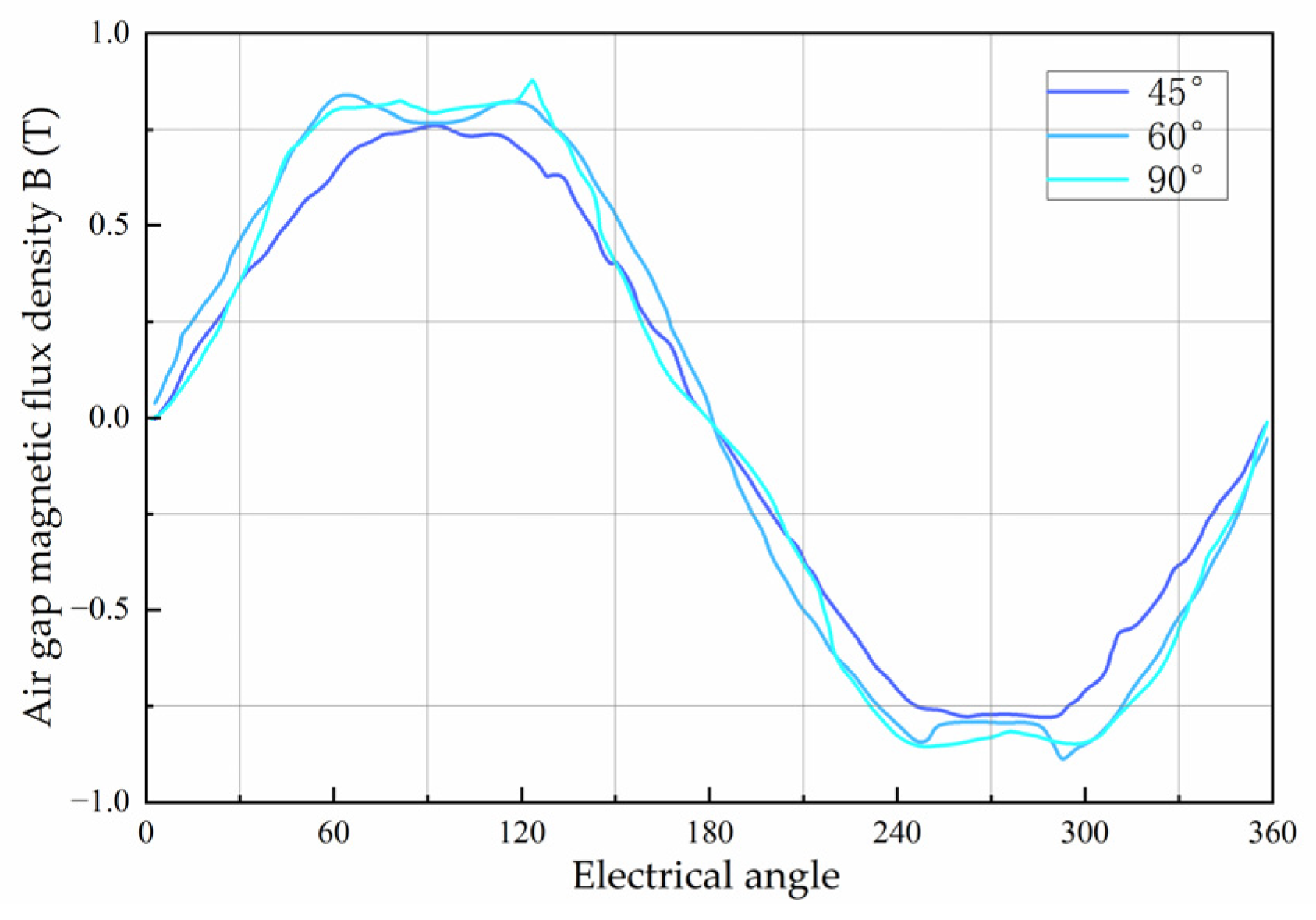
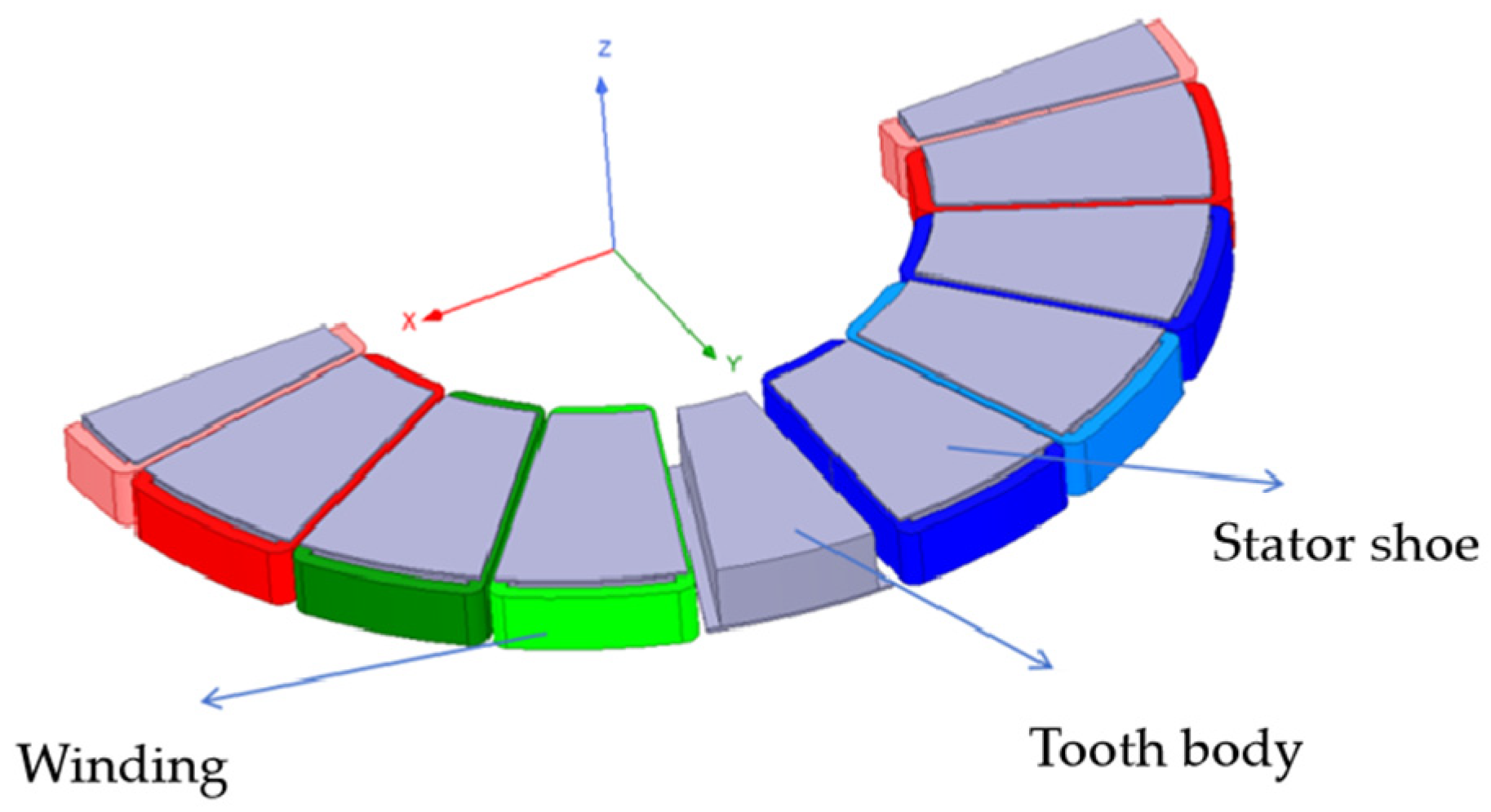
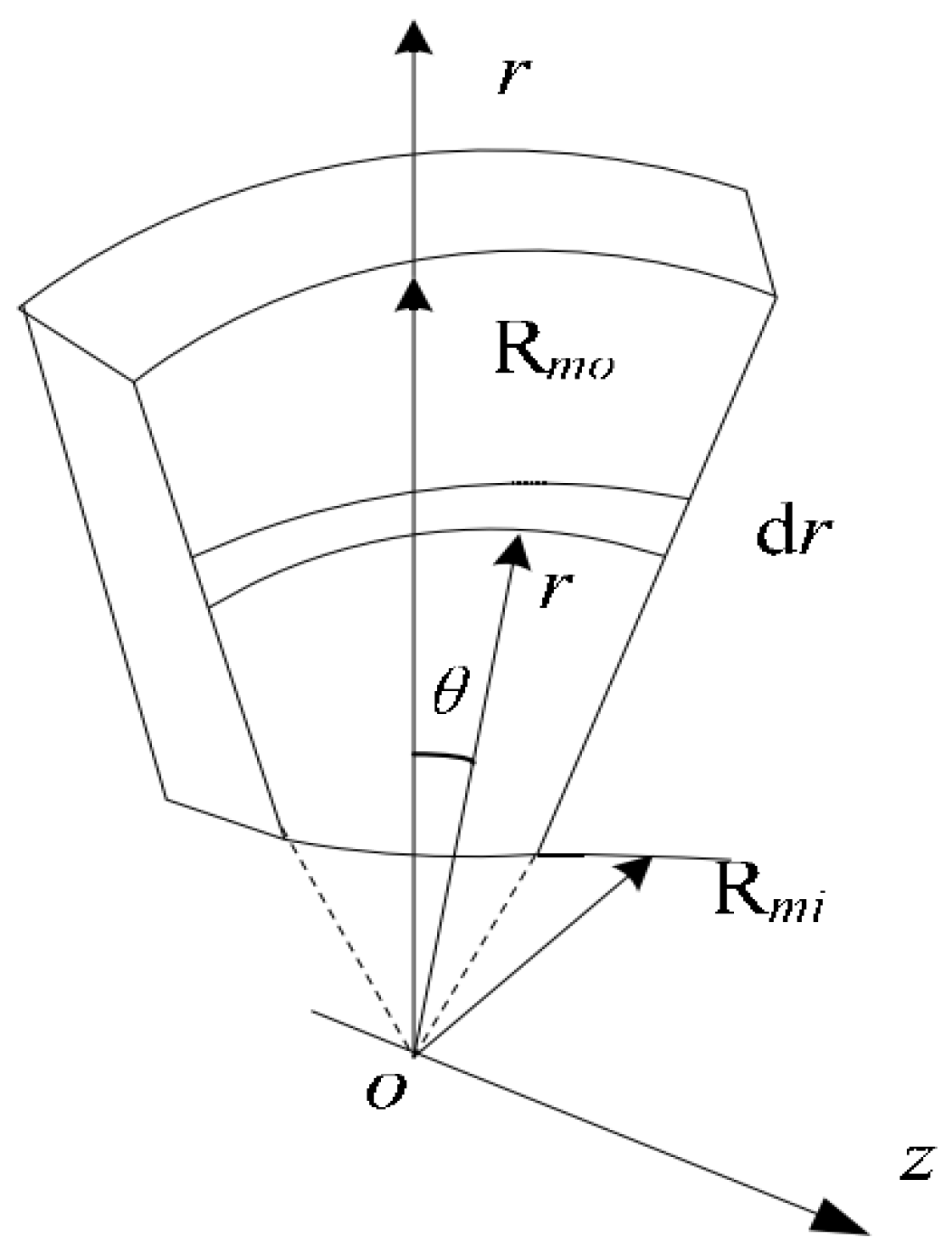
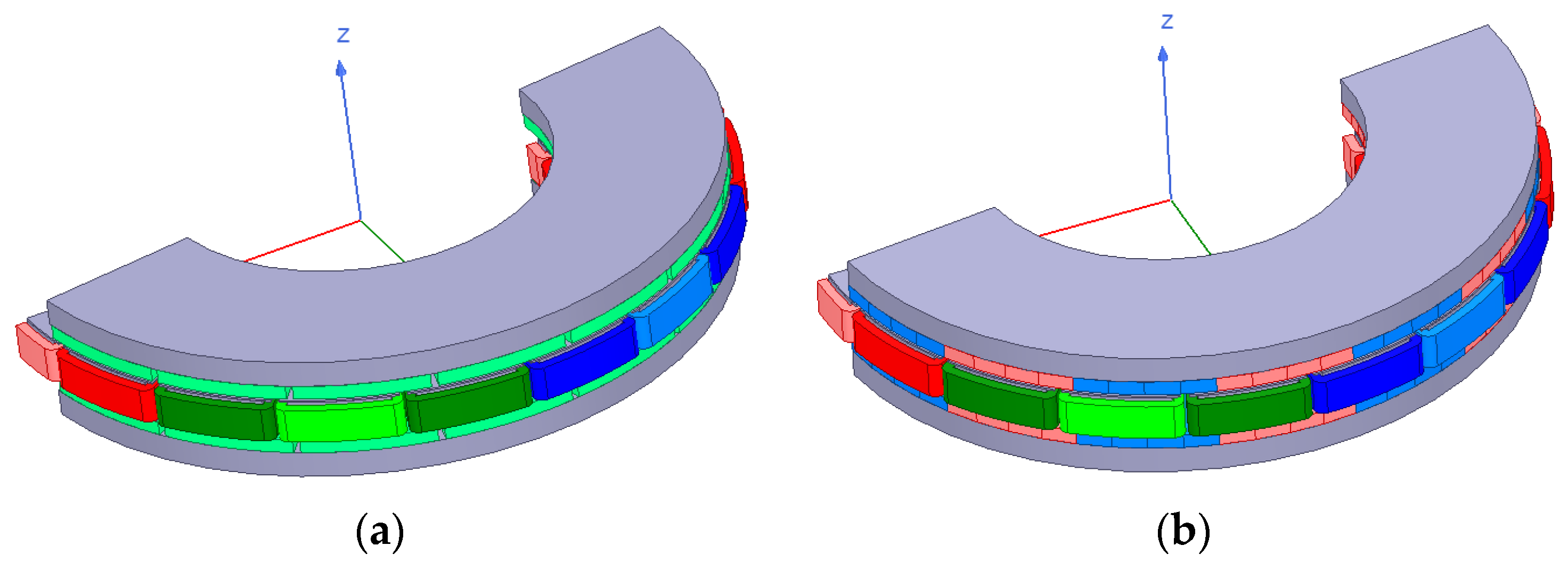
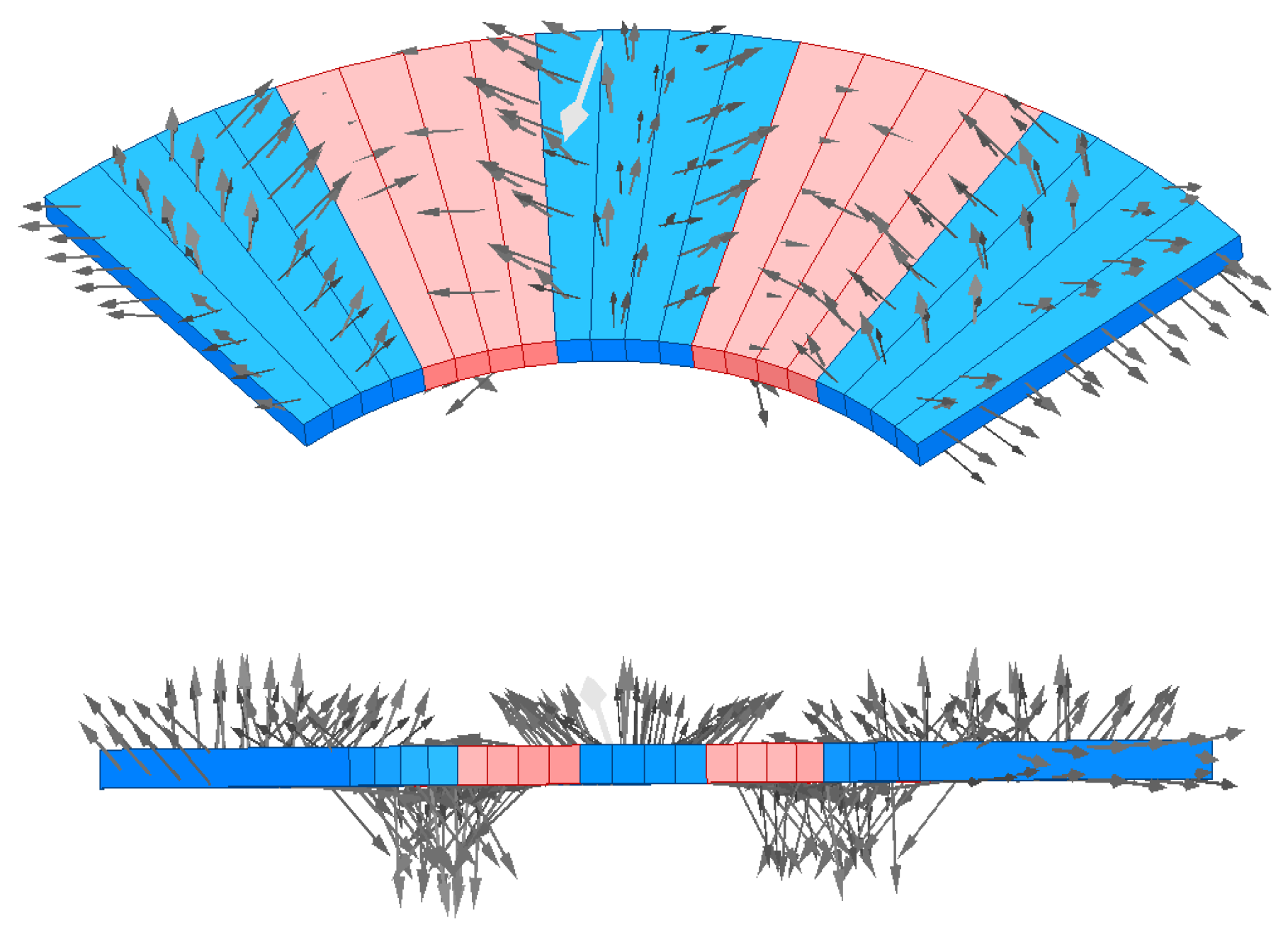
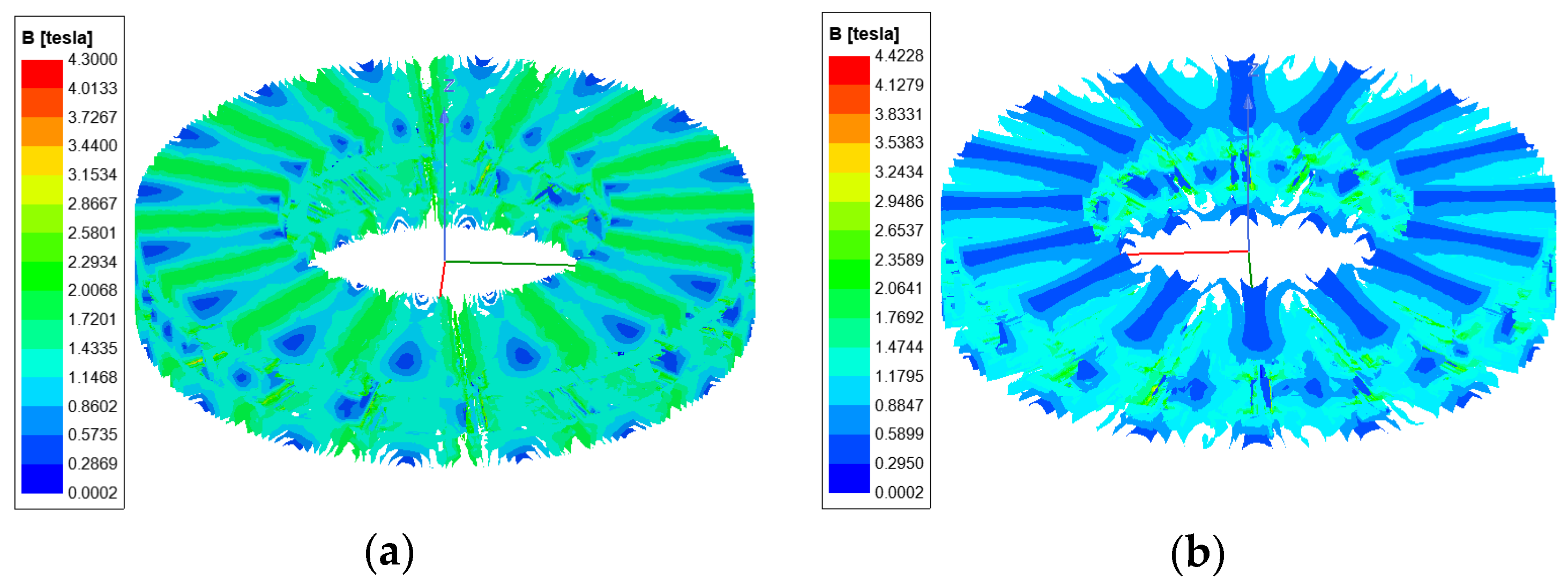


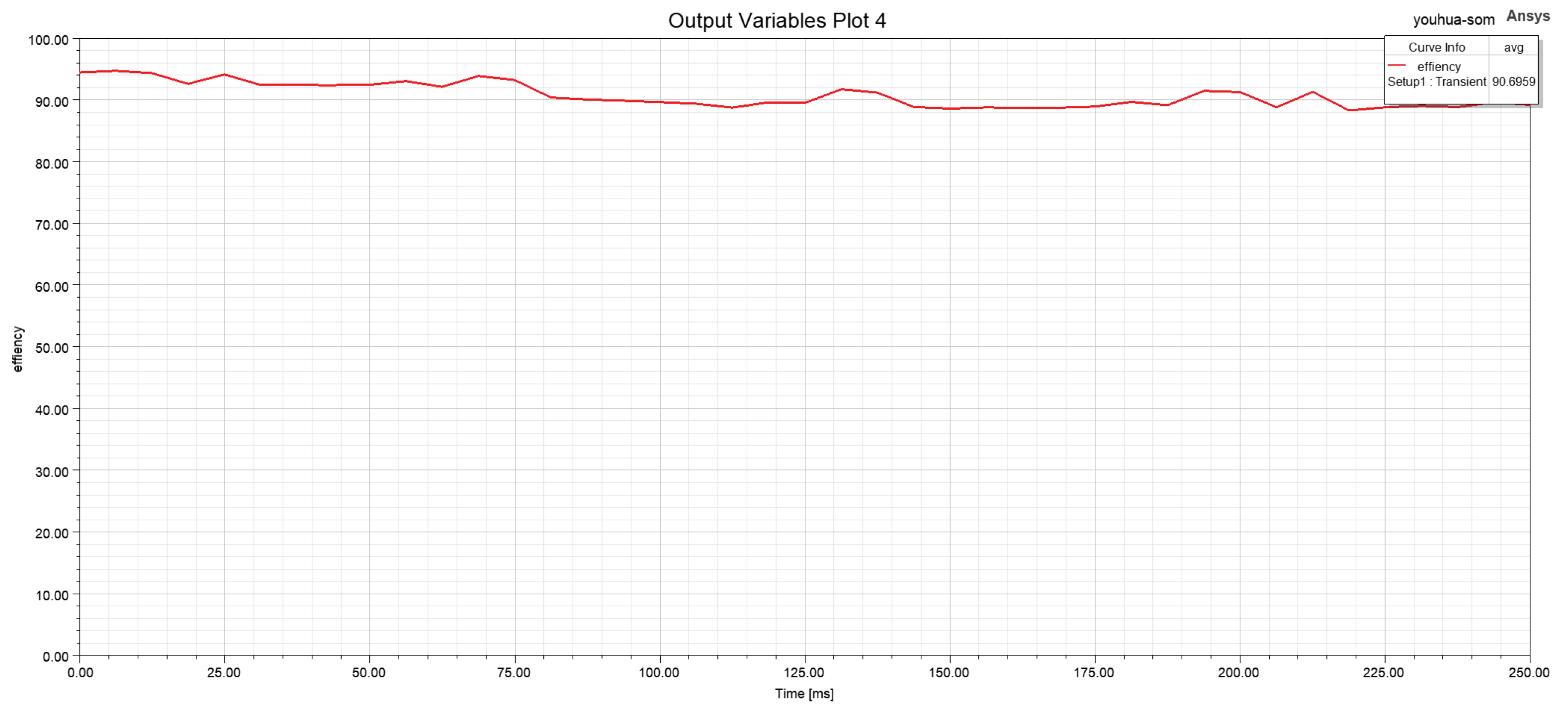
| Parameters | Numerical Value |
|---|---|
| Rated Power | 300 W |
| Speed | 60 r/min |
| Number of Phases | 3 |
| Power Factor | 0.98 |
| Frequency | 20 Hz |
| Efficiency | >85% |
| Parameters | Numerical Value |
|---|---|
| Pole logarithm | 20 |
| Slot number | 24 |
| Halbach array angle | 45° |
| Permanent magnet thickness | 8 mm |
| Air gap length | 1 mm |
| Outer diameter | 370 mm |
| Inner diameter | 200 m |
Disclaimer/Publisher’s Note: The statements, opinions and data contained in all publications are solely those of the individual author(s) and contributor(s) and not of MDPI and/or the editor(s). MDPI and/or the editor(s) disclaim responsibility for any injury to people or property resulting from any ideas, methods, instructions or products referred to in the content. |
© 2025 by the authors. Licensee MDPI, Basel, Switzerland. This article is an open access article distributed under the terms and conditions of the Creative Commons Attribution (CC BY) license (https://creativecommons.org/licenses/by/4.0/).
Share and Cite
Liu, W.; Yang, J.; Pei, L.; Rafiei, M.; Yang, Y.; Wang, Y.; Cui, J.; Guo, Y.; Zhang, B. Structural Optimization and Electromagnetic Performance Research of Axial Magnetic Field Tidal Current Generators. Energies 2025, 18, 2520. https://doi.org/10.3390/en18102520
Liu W, Yang J, Pei L, Rafiei M, Yang Y, Wang Y, Cui J, Guo Y, Zhang B. Structural Optimization and Electromagnetic Performance Research of Axial Magnetic Field Tidal Current Generators. Energies. 2025; 18(10):2520. https://doi.org/10.3390/en18102520
Chicago/Turabian StyleLiu, Wenzhou, Jinghuan Yang, Lixin Pei, Mohammad Rafiei, Yilong Yang, Yuliang Wang, Jiacheng Cui, Yun Guo, and Baowen Zhang. 2025. "Structural Optimization and Electromagnetic Performance Research of Axial Magnetic Field Tidal Current Generators" Energies 18, no. 10: 2520. https://doi.org/10.3390/en18102520
APA StyleLiu, W., Yang, J., Pei, L., Rafiei, M., Yang, Y., Wang, Y., Cui, J., Guo, Y., & Zhang, B. (2025). Structural Optimization and Electromagnetic Performance Research of Axial Magnetic Field Tidal Current Generators. Energies, 18(10), 2520. https://doi.org/10.3390/en18102520






